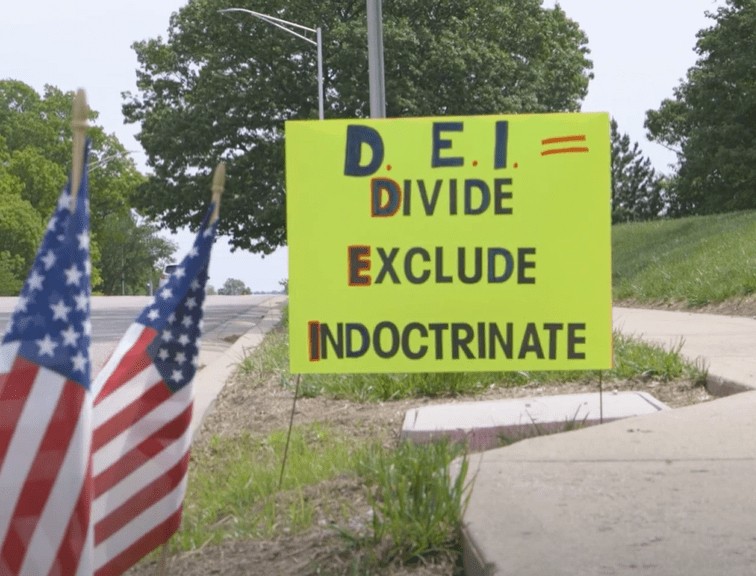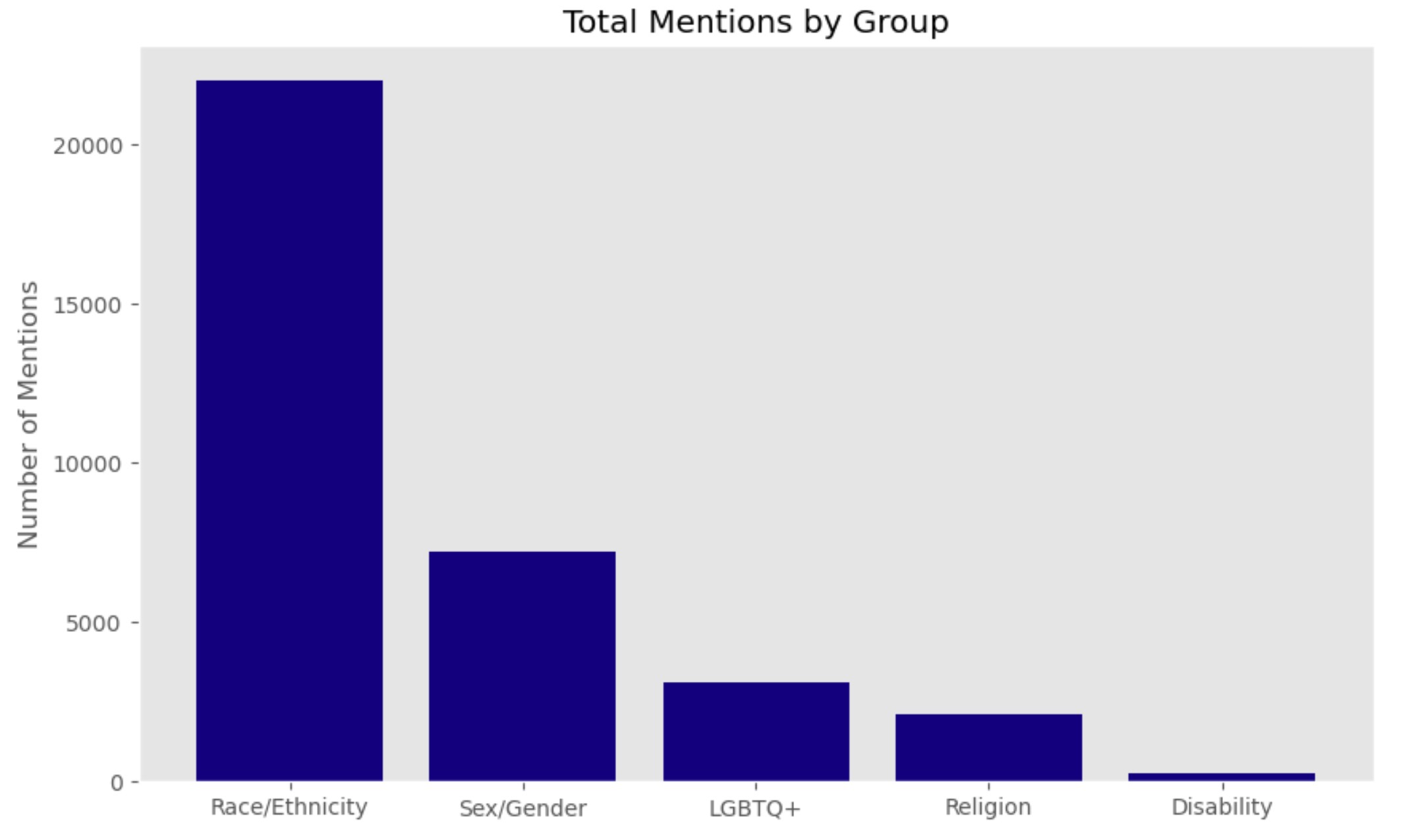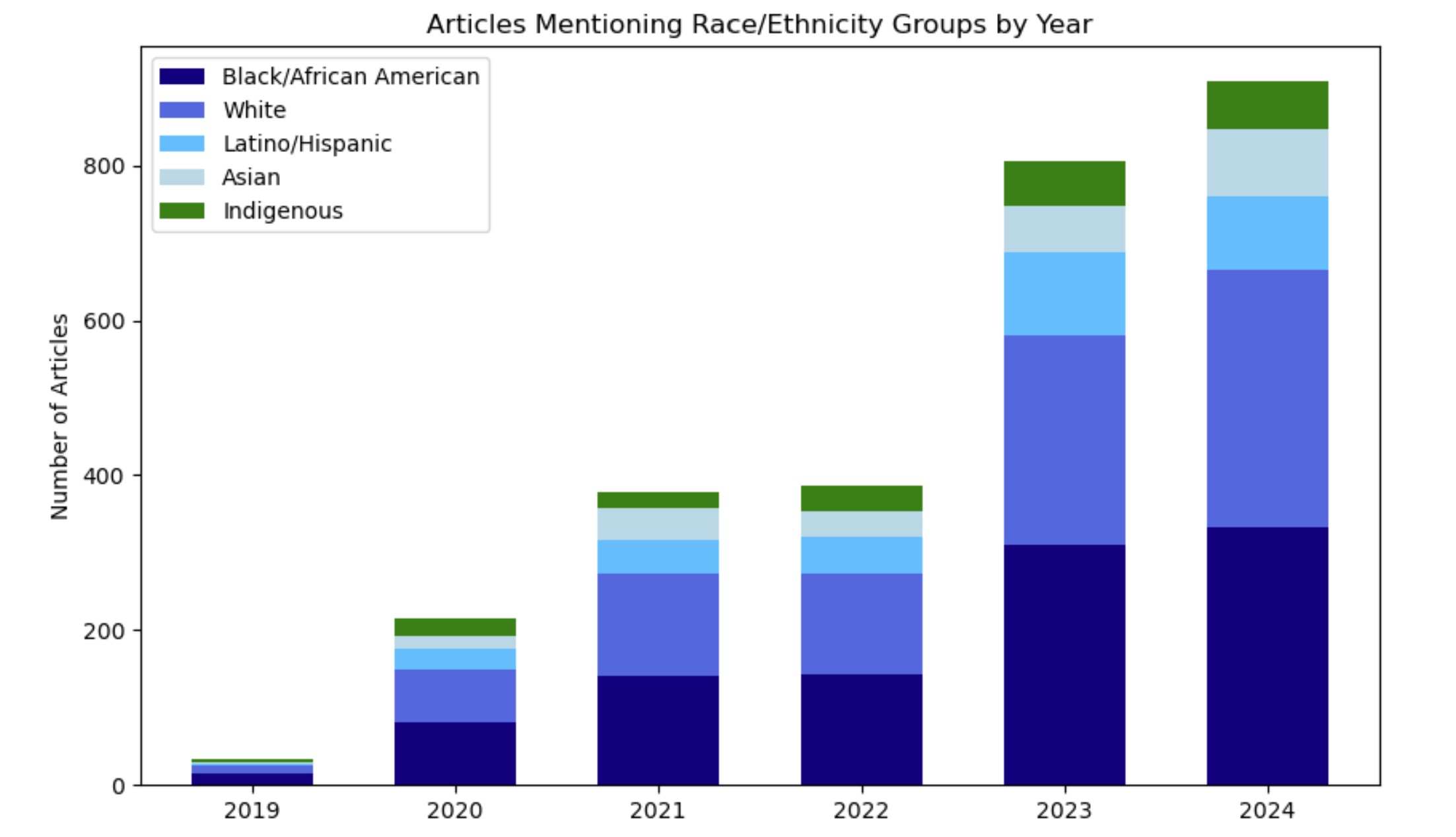DEI’s Narrowing Lens
How media representation transformed DEI from inclusive to divisive

Across the United States, we are witnessing the targeted dismantling of Diversity, Equity, and Inclusion (DEI) programs. From state legislative bans to corporate cutbacks to executive orders, these initiatives face unprecedented challenges. To understand how we arrived at this moment of backlash, we examine how media coverage presents DEI and which groups become most associated with these initiatives in public discourse.
DEI, by definition, encompasses a remarkably broad spectrum of identities and experiences in its efforts to combat discrimination. According to US laws, discrimination in the workplace can be based on one’s “race, color, religion, sex (including pregnancy, transgender status, and sexual orientation), national origin, disability, age (age 40 or older), or genetic information.” DEI initiatives work to address all these dimensions and create environments where everyone can have access and fully participate regardless of their background. However, our analysis reveals that the media tells a very different, much narrower story about DEI.
When examining which dimensions of diversity receive the most attention, we analyzed 1,855 newspaper articles that mentioned “Diversity, Equity, and Inclusion,” or “DEI” from January 1, 2016 through December 31, 2024 across four major newspaper outlets: The New York Times, The Washington Post, The Wall Street Journal, and USA Today. Our results show a clear hierarchy. Race/ethnicity, sex/gender, and LGBTQ+ dominate media coverage of DEI, while other aspects like religion and disability status receive significantly less attention.
Of the total articles mentioning DEI initiatives between 2016 and 2024, race/ethnicity, sex/gender, and LGBTQ+ topics were most frequently referenced. The data shows 84.3% of all articles addressed race/ethnicity, 67.0% discussed sex/gender, and 35.3% mentioned LGBTQ+ groups. Among these three categories, media particularly associated DEI with the following identities: Black Americans (55.5%), women (50.4%), and LGBTQ+ individuals (34.7%). Other topics included in the definition of DEI, like religion (24.6%) and disability (5.3%), got significantly less attention. This pattern of imbalanced coverage creates a perception that DEI primarily serves certain groups — Black Americans, women, LGBTQ+ individuals — at the expense of others.
Furthermore, when examining the total number of times each topic appeared within all of the articles (because individual articles may mention specific groups multiple times), we found that race and ethnicity were referenced far more often than any other category. The data depicted in the graph below reinforces the idea that race is the central focus of DEI-related media coverage.

While race and ethnicity clearly dominate DEI-related media coverage, an even closer look reveals that not all groups receive equal attention or are portrayed in the same way. Black/African American was mentioned the most frequently, appearing at least once in more than half of all articles. Meanwhile, Latino/Hispanic (17.6%), Asian (12.9%), and Indigenous (11%) people received significantly less attention. Interestingly, our analysis found that terms like “White” (50.9%) appeared in DEI coverage almost as frequently as “Black” or “African American.” This showcases how DEI discussions are centered around race, but they are particularly conversations about Black and White people. However, it is critical to note that Black and White racial groups were discussed in very different ways.

After reviewing 400 randomly selected sentences from articles mentioning the two largest groups (Black/African American and White), our research found that the contexts for each differed greatly, especially across time. Before mid-2021, articles mentioning Black Americans commonly portrayed DEI programs as either not doing enough to create opportunities and benefit Black employees. For example, in a 2020 Washington Post article titled “As big corporations say ‘black lives matter,’ their track records raise skepticism,” the impact of DEI programs includes how “black employees are more willing to speak out about their experiences of discrimination in the workplace and pressure managers for change.” By the start of 2023, however, the tenor began to pivot as articles portrayed some Black Americans as unqualified DEI hires. As DEI “scandals” began to arise, we see Black Americans, or people of color more generally, being scapegoated.
In contrast, later articles mentioning White Americans described how the group feels that the DEI system is cheating them because it is doing too much for Black workers or posing challenges for White ones. Starting in 2023, a common narrative emerged as specifically White men began to view DEI as a threat or obstacle. In a 2024 Wall Street Journal article tracking Elon Musk’s X/Twitter posts, Musk was quoted as making strong remarks against DEI, such as “DEI must DIE,” and supported the idea that White Americans were made to feel guilty about their race.
By narrowing the scope of DEI in the media, public discourse has transformed a concept originally intended to expand fairness and accessibility for all marginalized groups into something that divides people. The increasing association with specific identity groups (Black Americans, women, LGBTQ+) with DEI initiatives in media coverage creates a problematic dynamic when combined with intensifying opposition to these programs.
Rather than being viewed as efforts to address historical inequities and create more balanced representation, DEI became portrayed as a zero-sum game. This created an “us-versus-them” framework that further generated anti-DEI sentiment. As the Trump Administration and legislators across the country demonstrate clear hostility toward DEI in government and education, understanding patterns and narratives in media coverage is crucial for developing strategies to communicate the value of creating diverse, equitable, and inclusive environments that benefit everyone.
—Andy Cao and Ting Cui
Methodological note: We examined all 1,855 articles containing “Diversity, Equity, Inclusion” or “DEI” published between January 1, 2016 and December 31, 2024 in The New York Times, The Washington Post, The Wall Street Journal, and USA Today. We tagged articles that mentioned broad identity groups (race/ethnicity, sex/gender, LGBTQ+, etc.) as well as racial and ethnic groups (Black, White, Latino/Hispanic, etc.). For additional information regarding our methods, see here. Photo credit: Darrin Dressler Video, featured in the Kansas Reflector.